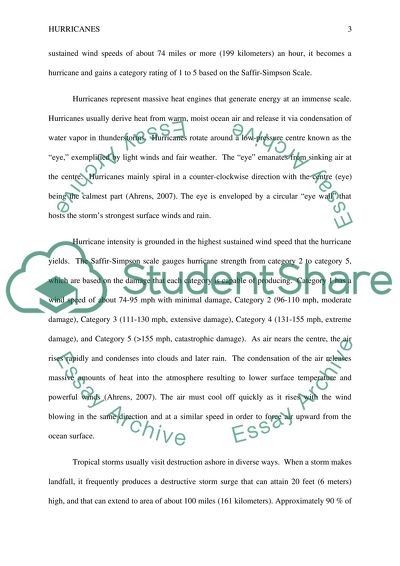Hurricanes Essay Example | Topics and Well Written Essays - 500 words. Retrieved from https://studentshare.org/environmental-studies/1602143-hurricanes
Hurricanes Essay Example | Topics and Well Written Essays - 500 Words. https://studentshare.org/environmental-studies/1602143-hurricanes.


